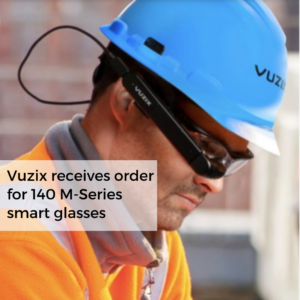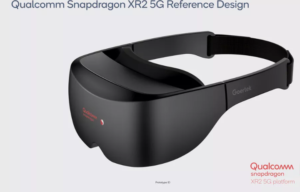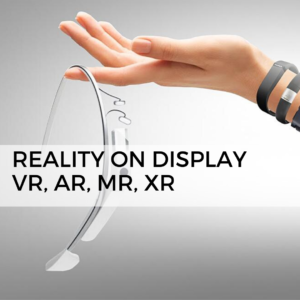The State of AR and What’s to Come

HoloLens 2 validates and expands AR for business
The arrival of Microsoft’s HoloLens 2 signals a tipping point for AR and wearables. This is a second-generation headset that introduces massive improvements in gesture recognition, larger field-of-view, and overall ergonomics. But what’s most significant is who it’s not for, primarily: gamers or consumers.
AR and VR hardware development—and what sometimes seems like an insane amount of venture capital—has followed video games and immersive entertainment concepts.
Microsoft flips that with the HoloLens 2. Microsoft is squarely taking aim at the enterprise market, betting big that developers will create applications and find use cases that will put AR in a broad range of workflows. The company obviously knows how to create entire business ecosystems at an enterprise scale. Expect a bevy of Fortune 100 businesses and even the U.S. military to make waves with HoloLens 2 AR use cases this year.
Who will throw their hat into the ring in 2020?
The arrival of HoloLens 2 will also open the floodgates in the wearables market. You’ll see new AR/VR devices from more blue-chip device manufacturers, and we saw no shortage of hardware-related announcements coming out of CES 2020. While we may have to wait a bit longer for the long-rumored Apple glasses, there’s no way that other electronics powerhouses will stand still. Expect competitive, next-gen AR/VR iterations from Samsung (who already teased the early stages of their AR glasses), Google, Lenovo, Toshiba, and more as they’re pushed to innovate or get left behind. Along with the HoloLens 2, competition and ubiquity will further expand AR’s potential in the enterprise business and beyond.
Niche AR players: Time to take the leap
With 2020 poised to be the year Big Tech gets heavy into AR, what’s going to happen to the smaller players? In tech, we’ve seen this movie before—industry consolidation and intellectual property acquisition. For start-ups, niche firms, or dreamers in AR and wearables, 2020 is the year to prove their technology is viable and compelling enough to compete with the established manufacturers. Launch a compelling offering, get your devices on the heads of business users, and get ready to innovate faster than the giants to prove real ROI. There’s an $80+ billion market out there for AR/VR maturing in the next few years.
Ready to incorporate AR into your business? What to look for when choosing an enterprise AR device
While many enterprise organizations already implementing AR are seeing great success with the use of smartphones and tablets, there is no question that a hands-free experience is a holy grail, particularly for industrial workers repairing complex machinery or manufacturing products on the factory floor. When trying to determine which head-mounted device is right for its workers, enterprises must think through several factors including use case, the environment in which the device will be worn, the device’s power source and battery duration, security concerns, mobile device management, and more.
First—a word of caution. Enterprises should not dwell too much on the types of hardware used when engaging with AR initially due to the rapidly evolving market. Rather, it’s more important to ensure the viability of the AR content being created and enterprises should look to engage with a software vendor who is dedicated to supporting the best of breed hardware and continuing to update their software when new devices launch. This allows enterprises to take advantage of the software platform that can store their data and content and maintain its long term investment. This also prevents organizations from being pigeon-holed into a particular set of hardware as use cases will evolve and AR deployments often scale beyond the initial scope.
There are generally two categories of wearable displays on the market, each with characteristics that will impact the suitability of the device based on the task at hand: monocular displays such as Google Glass, RealWear and Toshiba’s dynaEdge AR Smart Glasses, and fully immersive displays such as Microsoft’s HoloLens 2 and Lenovo’s ThinkReality A6. Monocular displays boast a longer battery life and allow for lighter-weight applications, such as field service applications. The drawback to this category is that use cases are limited—monocular displays typically only support basic text-based work instructions or limited see-what-I-see remote assistance applications.
Fully immersive hardware such as the HoloLens 2, have much more varied applications of use cases such as field service, immersive training, remote support using shared real-space annotations, remote collaboration, manufacturing work instructions, and maintenance work instructions. With the ability to support more sophisticated use cases, these devices tend to be bulkier and consume much more battery life, which means the headset can’t comfortably be worn as long.
Finally, there are concerns around data privacy, security and device management that should be taken into consideration. Enterprises today, and manufacturers working on sensitive equipment in particular, should evaluate what data is being stored on these devices, how the data is protected, and how the devices themselves are managed and protected. Each enterprise AR device has its own strengths and drawbacks and while one type of wearable may be a perfect fit for the needs of one organization, it may not be suitable for another based on how they plan to leverage AR for their business.
As enterprise AR continues to gain momentum and transform the workforce, expect people to become more comfortable with wearing a device as part of their daily routine. In the years ahead, we believe the underlying technology involved with creating a positive user experience—technical aspects such as processing speed, user experience, available compute power and rendering – will continue to mature. This will usher in a new era of devices that boast a smaller form factor, an increased level of wearability and more sophisticated video display, allowing workers to explore a new set of applications where AR can help them do their jobs better than ever before.








